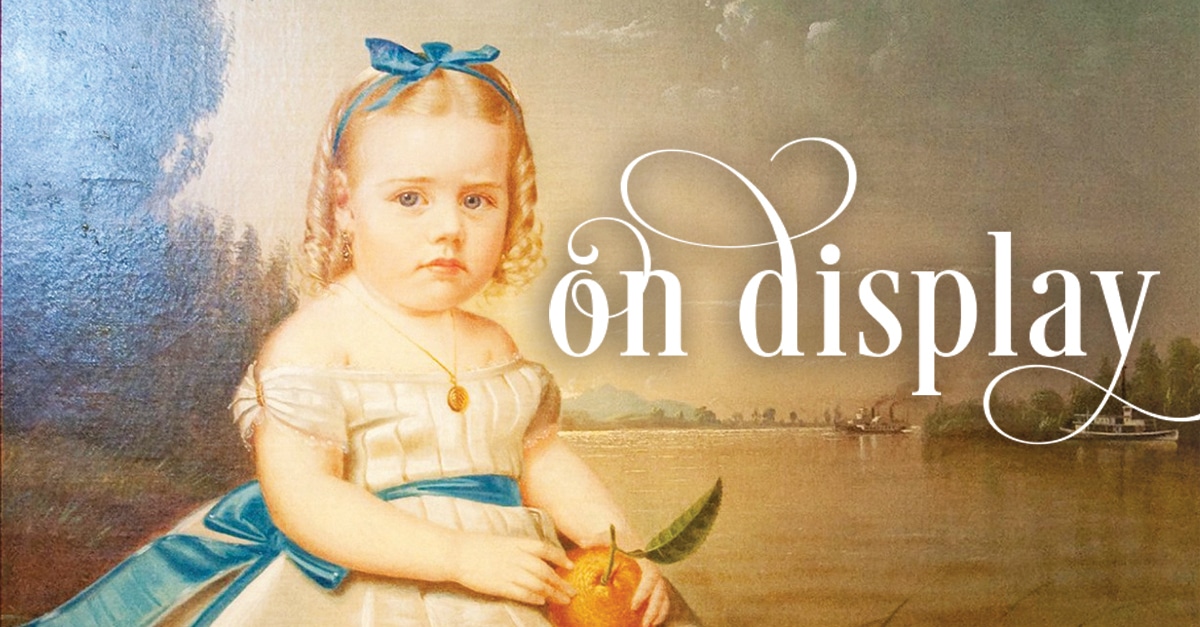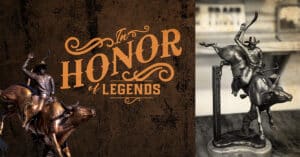On Display
Shasta State Historic Park’s Art Collection…
Annie Clark is always up for a staring contest. Schoolchildren visiting Shasta State Historic Park’s art gallery like to lock eyes with the little girl portrayed on the banks of the Sacramento River in an 1869 oil painting. No matter where they move, Annie’s eyes follow.
That feeling of being watched is called vanishing perspective, resulting from artist Fortunato Arriola’s use of shadow and light, students learn. It’s one of many lessons to be found in the state park’s unique art collection.
The Boggs Collection – 98 paintings created between 1850 and 1950 – is a treasure for visitors of all ages. “It is an amazing collection,” says Jonathan Sutliff, state park interpreter. “We are very fortunate to have this.”
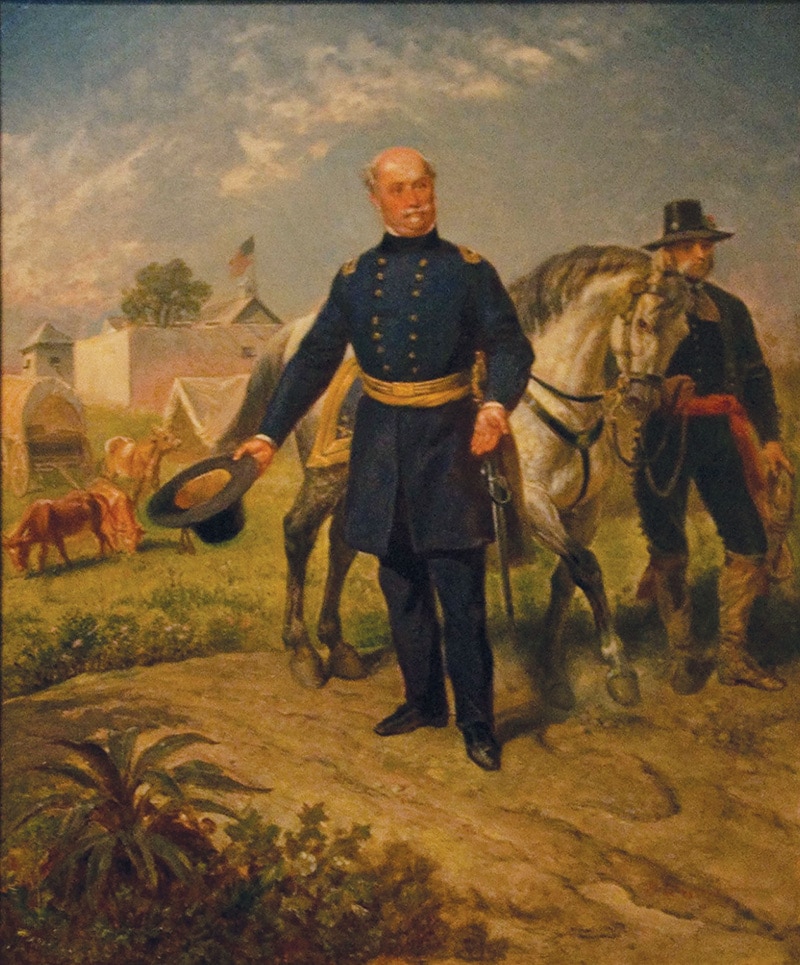
Shasta State Historic Park, five miles west of Redding, has the only dedicated art collection in the California State Parks system. It includes a portrait of John Sutter by Emanuel Leutze (1816-1868), who is best known for his painting, “Washington Crossing the Delaware”; California landscapes by Thaddeus Welch (1844-1919); nightscapes by Charles Rollo Peters (1862-1928); and a Paris scene by Giuseppe de Sanctis (1858-1924) showing the Statue of Liberty under construction.
Artists of different ethnicities and a significant number of women artists are represented. Female painters include African-American artist Sallie Benfield (1871-1956), early American impressionist Euphemia Charlton Fortune (1885-1969) and Alice Chittenden (1859-1944), known for her California wildflower paintings.
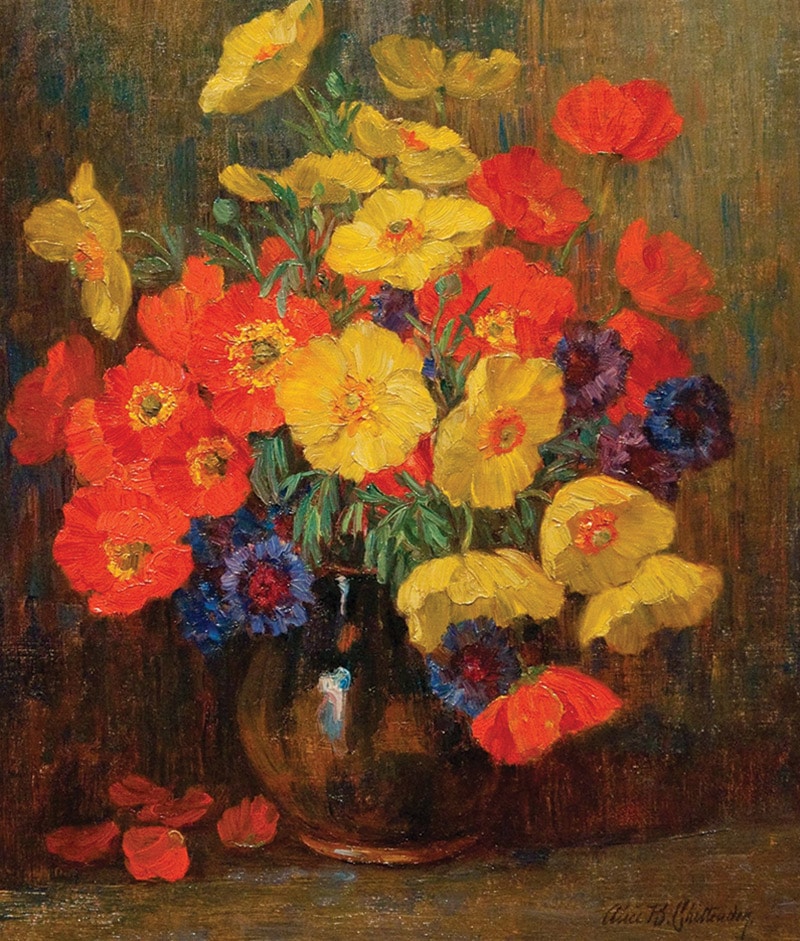
“Women artists are such an overlooked group, and here we have this little local treasure,” says Redding resident Aleta Carpenter, vice president of the National Board of American Women Artists. She wrote an article about the collection for the organization’s website, saying it is notable for the paintings by 14 women artists and because it was compiled by a woman: Mae Helene Bacon Boggs.
If the name sounds familiar, that’s because Boggs was a force for preserving Shasta County’s pioneer history. She pushed to make the Gold Rush-era ruins of Shasta into a state park and was behind the naming of Shasta Dam. Boggs compiled a detailed history of Shasta County transportation, publishing her book “My Playhouse was a Concord Coach” at age 75. Her donation of books, maps, reports and other historical items became the core of Redding Library’s Boggs Local History Collection.
Boggs was 8 when she and her mother came to California in 1871 from Missouri on the Transcontinental Railroad. They traveled by stagecoach to Shasta, where her uncle was the California Stage Company division agent. The Williamson Lyncoya Smith Art Gallery in the state park’s Courthouse Museum is named in his honor. Boggs lived in San Francisco for many years and was active in civic causes, including planning the 1915 Panama-Pacific International Exposition. The Expo connected her to artists, and her art collecting grew from there.
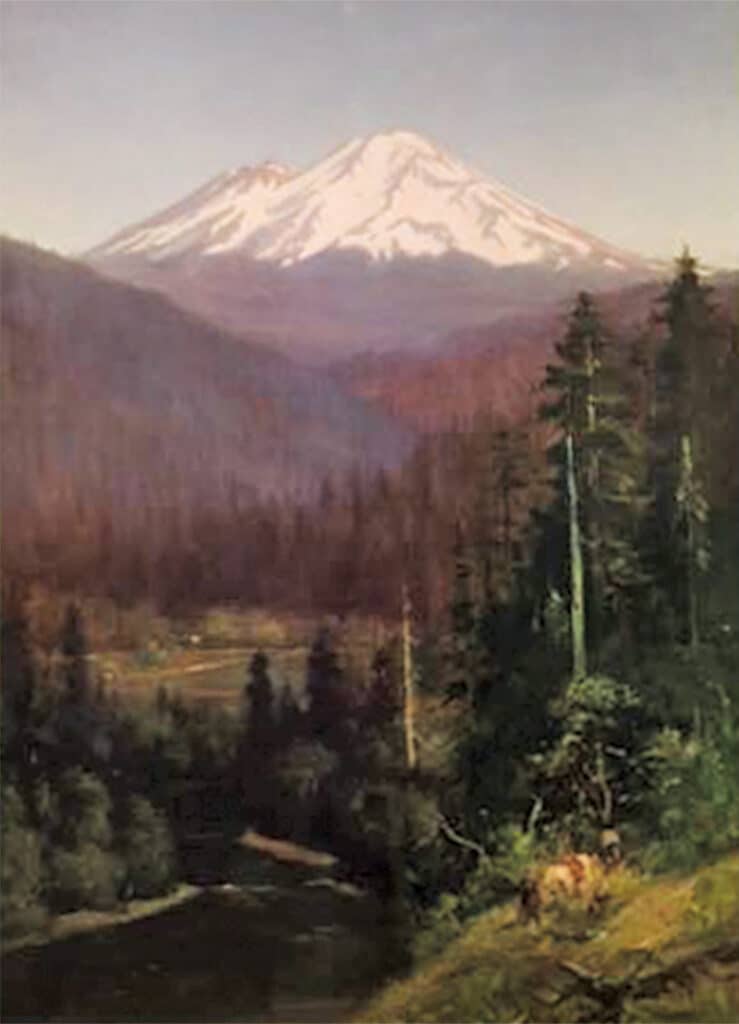
Whether purchasing portrait, landscape or still-life paintings, Boggs’ goal was to support working California artists, says recently retired Shasta State Historic Park Superintendent Lori Martin. Boggs’ acquisitions depict California people and places, as well places beyond the Golden State, including scenes from Europe. Many of the artists studied in Europe, Martin says.
Martin, who worked at the state park for 18 years, says the reaction of visitors to discovering such significant paintings in a tiny place like Shasta is surprise – and delight. Paintings in Shasta’s collection are in demand and periodically go on loan to major museums.
The deYoung Museum in San Francisco hoped to be the permanent home to the artwork, but Boggs opted to donate her paintings to Shasta State Historic Park. She reportedly told the first state park curator: “Nothing is too good for Shasta.”
The historical collection has its own fiery history. Three times in the past 15 years the artwork has been evacuated. Fires sparked by lightning in 2008, the 2018 Carr Fire and the Zogg Fire in late September resulted in the collection being packed up and moved to be safely housed in Sacramento.
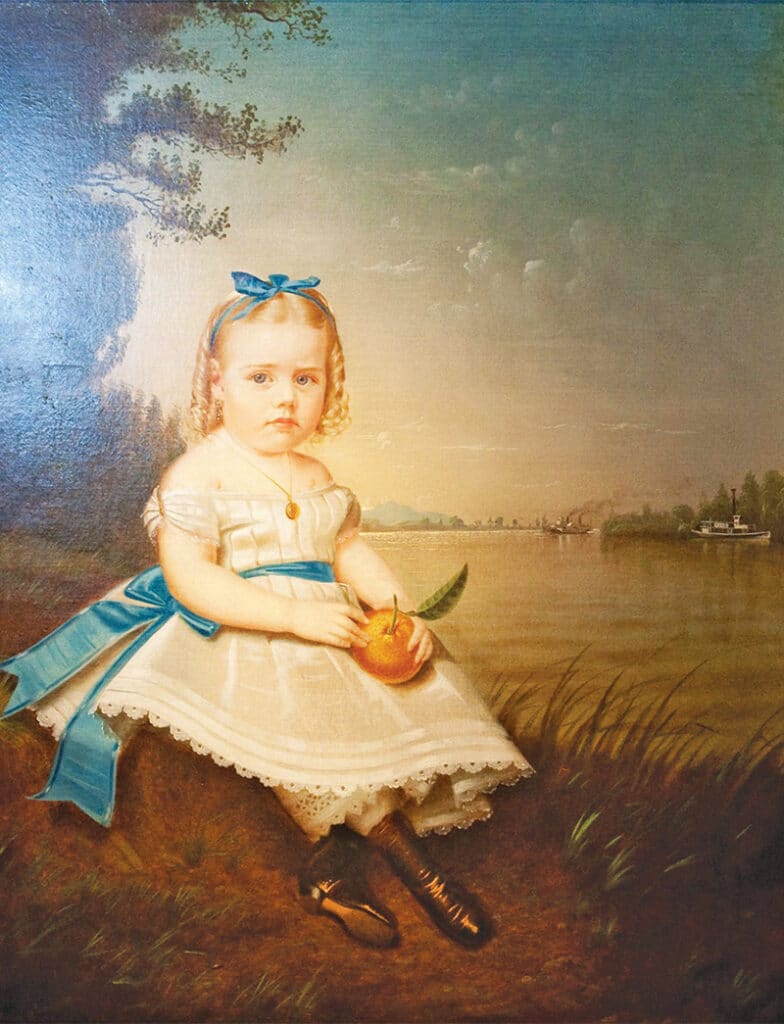
The Carr Fire, which burned through the park, led to the most chaotic evacuation. Martin says the fire was close and she realized the collection was “going to have to move, and move pretty quickly.” Staff and volunteers boxed up paintings in early morning darkness, hearing the fire in the distance. “I was so grateful for everyone pulling together,” Martin says.
Paintings and other artifacts were relocated to the Statewide Museum Collections Center in Sacramento. Having collections at the repository gives experts there the opportunity to inventory, clean and do any needed conservation work.
Boggs’ donations have been an ongoing gift to the North State. She died in 1963 at age 100. In one of her last letters to the park, she wrote: “I am grateful that I had the opportunity to leave something beautiful in Shasta for others to enjoy.”
For current information on Shasta State Historic Park hours,
visit www.parks.ca.gov/?page_id=456. The paintings in the Boggs Collection can be viewed virtually by clicking on the “Smithsonian Learning Lab Boggs Collection” link on the website. There also is a link for a 360-degree photo tour of the Courthouse Museum.

